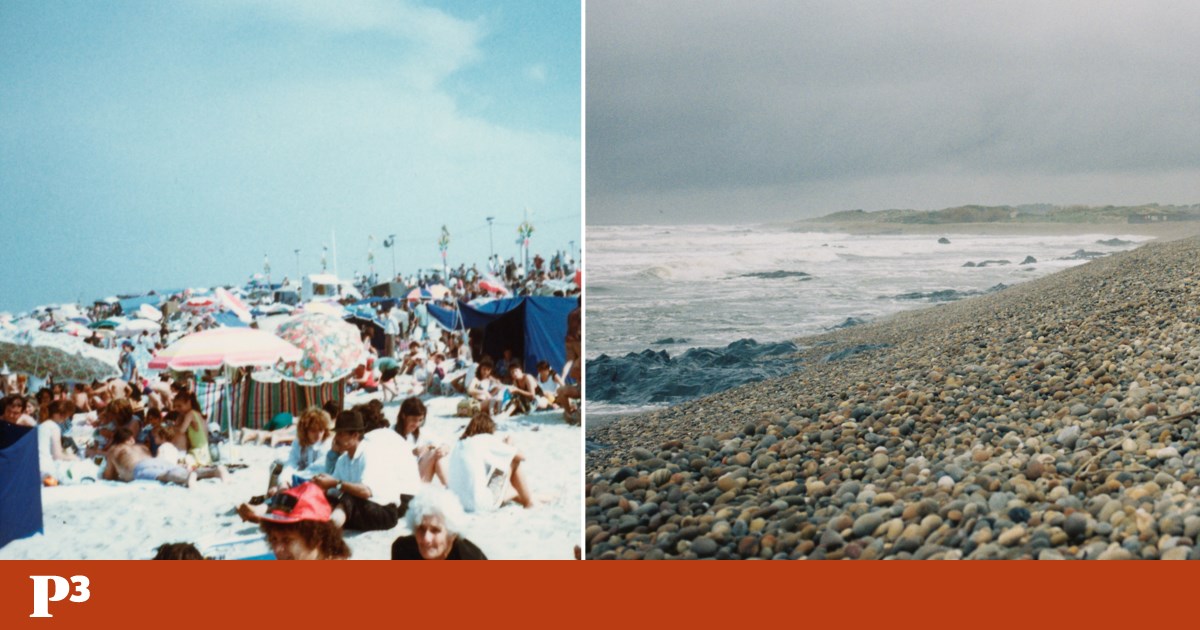During her childhood, the photographer's summer vacation Elisa Freitas It was spent on the beach of São Bartolomeu do Mar, in the municipality of Esposende. The fond memories of sunny days in the 1980s and 1990s, between swimming in the sea and playing in the sand, came back to her about five years ago. And in the place where she was happy, she encountered “a completely different scenario” than the one she remembered, says the 38-year-old photographer from Guimarães. “The beach was completely empty, there was no sand anymore and it was covered in rocks.” He noted that the “small houses” adjacent to the first beach line “no longer exist and have been demolished.” When she visited the place again, Elissa felt “empty” and at the same time “this great nostalgia.”
What happened to São Bartolomeu do Mar beach and the small community of Minho surrounding it? In the March 2024 special issue of the local newspaper Sea breezewhich has been around since 1975, the editorial describes a decade since the beach was demolished, “an idyllic place that once attracted people from all over the north of the country and received in its cottages many holidaymakers who ‘sought it for iodine for medical advice’.”
“Climate change may seem far away, but it is very close,” says Elissa. What radically changed the landscape on that waterfront, in Esposende, was the phenomenon of rising water levels (two metres) and coastal erosion. In 2003, with the aim of preserving the building on the first line, the municipality chose to intervene, replacing the beach with bags of sand and gravel.
The sea “swallowed” the beach, and despite efforts to the contrary, it was not possible to stop the demolition of some homes. Small businesses that relied on tourism “died” and the seasonal rental of rooms and lodgings ended, affecting almost everyone and, perhaps most importantly of all, creating a “void” in the hearts and identities of the people who lived there.
Using medium format photography, in the context of the advanced narrative course, Elisa Freitas developed, over the course of five months, the project titled From the sea. For more than a month, between December 2023 and the end of January of the following year, the photographer lived in São Bartolomeu with the sole purpose of taking pictures. The time she spent with the residents made Elissa “one of them.” “People used to joke with me and say I was a Saint Barthélemy photographer,” he says with a laugh.
While living in São Bartolomeu, Elisa realized how the small town had changed. “In the past, there were some cafes and supermarkets, but a large part of them is closed,” he says. “Today, there is only a small grocery store and two cafes. “There was also a small store that sold beach supplies, such as umbrellas etc., which has also been closed.”
What Elissa sees as the central issue is the disappearance of seasonal rental businesses. “Almost everyone in São Bartolomeu do Mar has rented out their homes to tourists, and that has stopped happening.” The small town dynamics have changed. “Even agriculture was closely linked to the sea there. People, who maintain much of their agricultural activity, in the past collected sargassum from the sea to fertilize the land. This stopped happening.
“It's as if a part of them has left,” says Elissa. One of the young women he met, Philippa, aged about 20, “couldn't remember the beach anymore”. “Even this emptiness disappears.”
Memories remain. Because she considered them important, Elisa included in the project photos of São Bartolomeo from the past, which she found at the Centro Social do Mar. “They have a large archive of beach photos.” For you, it was a “taken for granted” that it would include archives. He considered including images from his personal archive, but since they were largely focused on family experiences, he chose a more general image. “My goal with this project was to uncover the crowds and how many people went to the beach. I was just one of them.”
The work of Elisa, who has been photographing for more than ten years, is on display, in the Narativa space, until April 13, and includes “a collection of articles that appeared in the newspaper Presa de Mar,” which will be available for public consultation. “We also produced a special edition of the newspaper for the exhibition,” he highlights. The photo collection invites you to take a long look. Time is important, inside and outside of photos. “Analog photography has made photography take longer. I do a lot of commercial photography and reporting and usually shoot at a faster pace. This project forced me to think carefully about each image.

“Infuriatingly humble analyst. Bacon maven. Proud food specialist. Certified reader. Avid writer. Zombie advocate. Incurable problem solver.”

